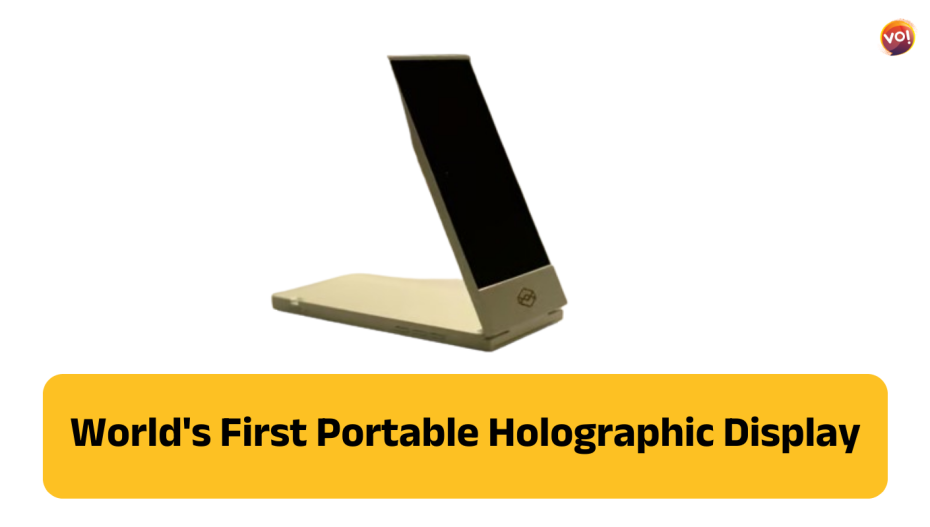In a groundbreaking move that combines the latest in 3D spatial platforms and generative AI, Looking Glass Factory has once again captured the imagination of tech enthusiasts with the launch of the “Looking Glass Go” – touted as the world’s first portable holographic display. Building on the success of its desktop counterpart, the Portrait, the Looking Glass Go promises to bring holographic experiences to users anywhere they go.
Company CEO Shawn Frayne emphasized the convergence of two major trends that have paved the way for the Looking Glass Go’s development: the rise of 3D spatial platforms and the transformative power of generative AI. Influenced by advancements like Apple’s Vision Pro and the spatial photography capabilities of the iPhone 15, along with the growing prevalence of 3D game engines and powerful GPUs, the Looking Glass Go is positioned to lead the charge into the future of personal holography.
One of the key features of the Looking Glass Go is its compact design, allowing users to enjoy immersive 3D visuals without the need for special glasses or headsets. The device boasts an AI-powered software suite capable of transforming two-dimensional photos into three-dimensional holograms by envisioning multiple perspectives of the same image. Additionally, users with spatial photography-enabled smartphones can create 3D holograms effortlessly.
The Looking Glass Go utilizes high-precision light-field optics to display holographic content on a 6-inch diagonal viewing area. This display can be tilted to the user’s desired angle, providing a customizable and interactive holographic experience. The device supports the loading of 3D creations, holographic art, and Luma AI-scanned images, with the capability to store over a thousand holograms in its local memory.
Snapchat for Web is now available to all users Worldwide. Know in Detail Here
A standout feature is the Liteforms app, powered by ChatGPT, which enables users to generate holographic characters from text prompts and customize them with voice and personality. The device also supports the creation of holographic art through the bundled software suite, including an app for playing experimental spatial videos and premium access to the hologram-sharing platform Looking Glass Blocks.
The Looking Glass Go boasts twice the pixel density of its predecessors, offering a significant improvement in visual clarity. The device is remarkably slim, nearly 10 times thinner than previous models, and is constructed using ABS, steel, and glass. With dimensions of 16 x 8 x 1.9 cm and a weight of 235 g, the portable device folds flat for easy transport between uses.
Launching on Kickstarter with early bird pledges starting at $199 (expected retail price $300), the Looking Glass Go aims to begin shipping in June 2024. As a testament to its innovative design, the company will showcase the device at CES 2024 in Las Vegas, giving attendees a firsthand look at the future of portable holography.
The Looking Glass Go represents a significant leap forward in holographic display technology, offering users a unique and immersive experience that was once confined to the realms of science fiction. With its compact form factor, advanced features, and accessibility, the Looking Glass Go is set to redefine how we perceive and interact with holographic content in our daily lives.
Redmi K70 Arrives with New 50 MP Main Camera, K70 Pro Packs a Snapdragon 8 Gen 3. Check Out Specification













